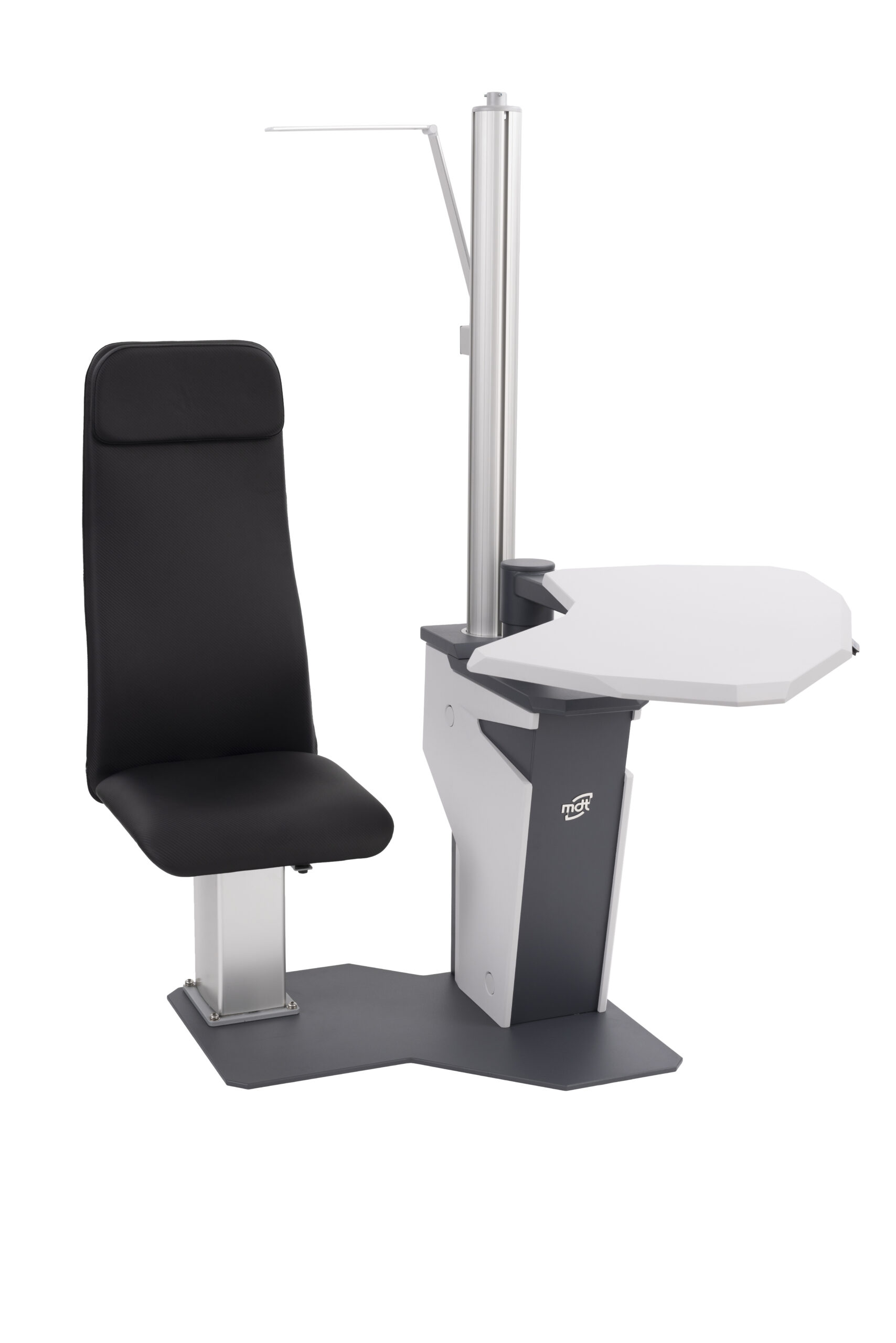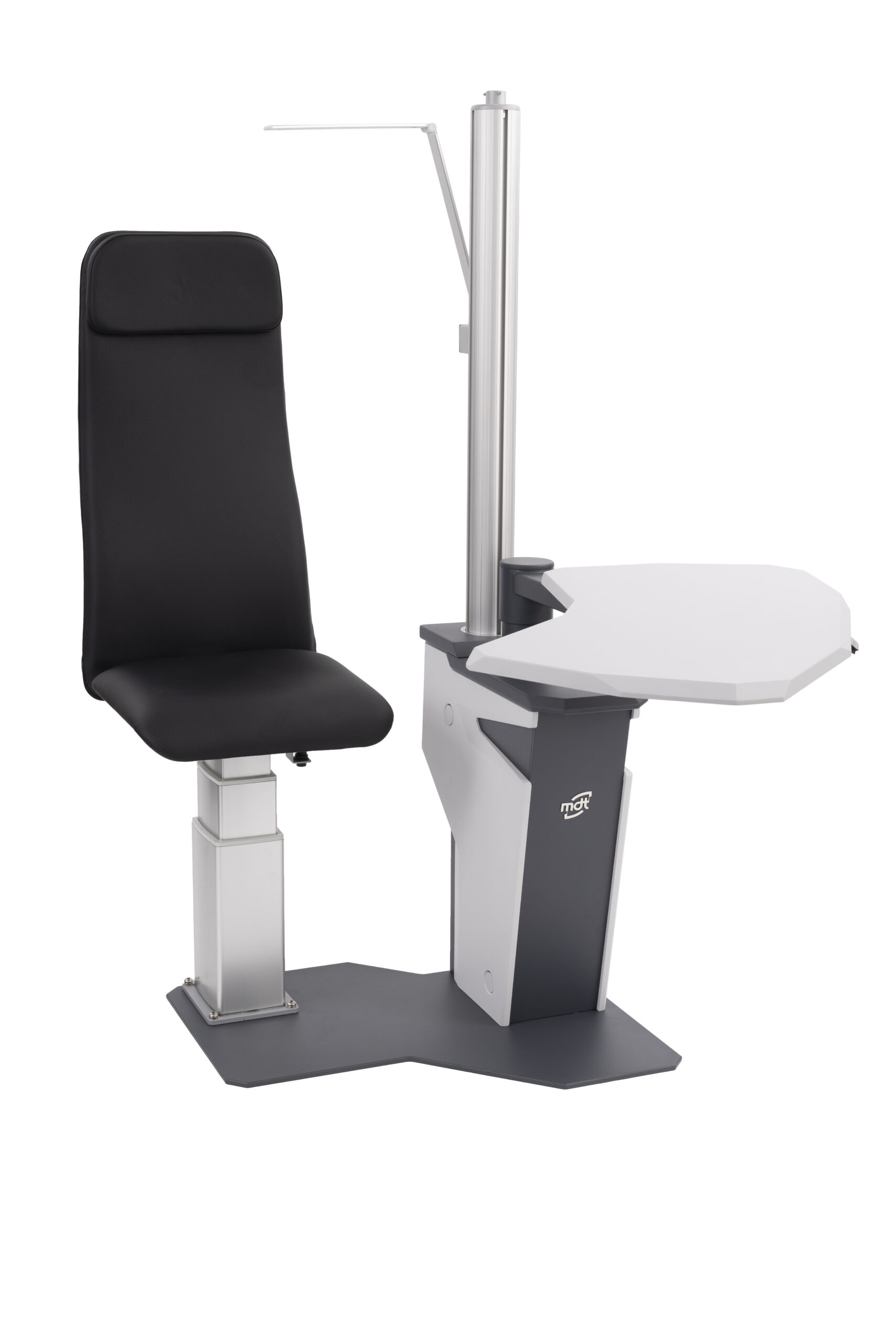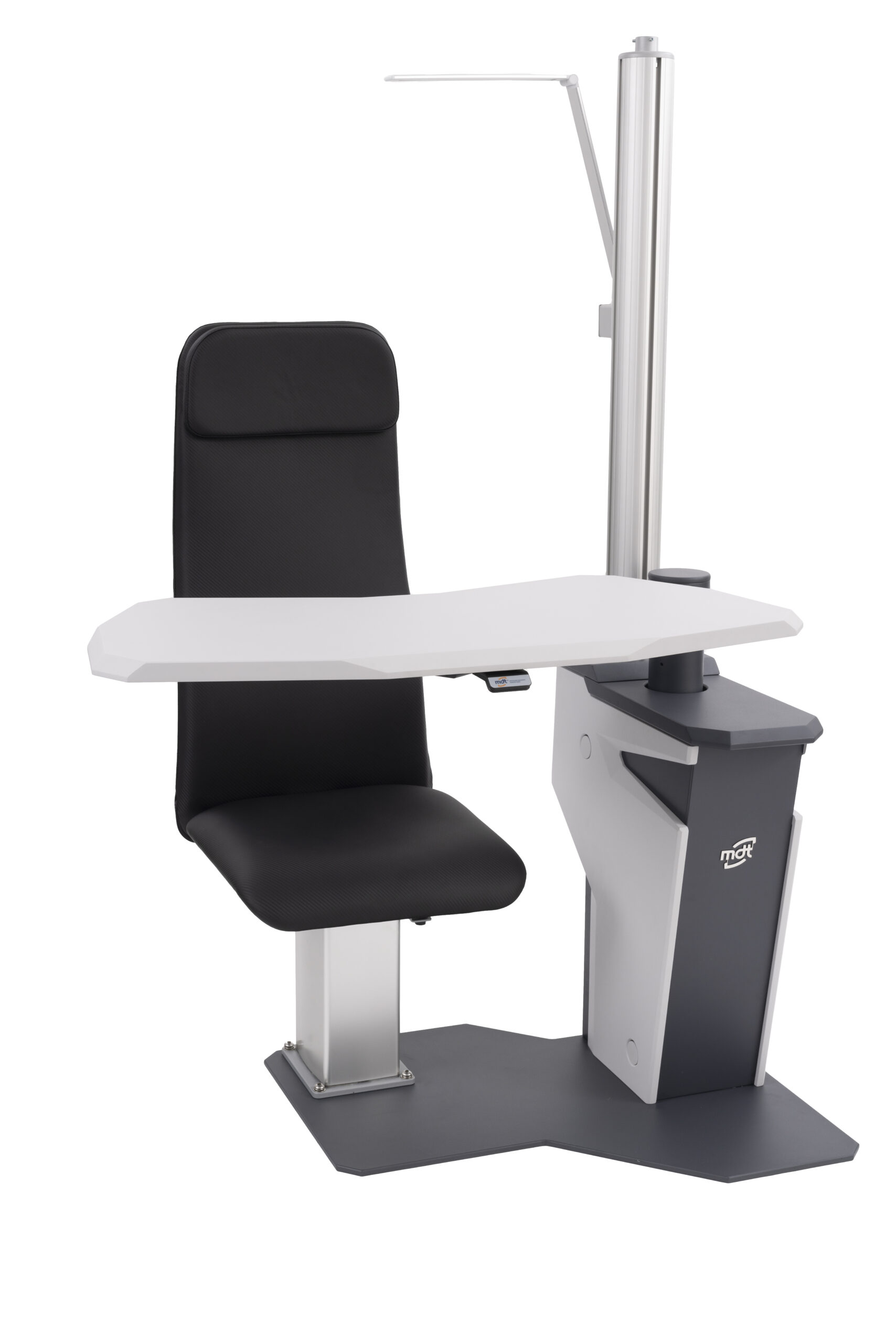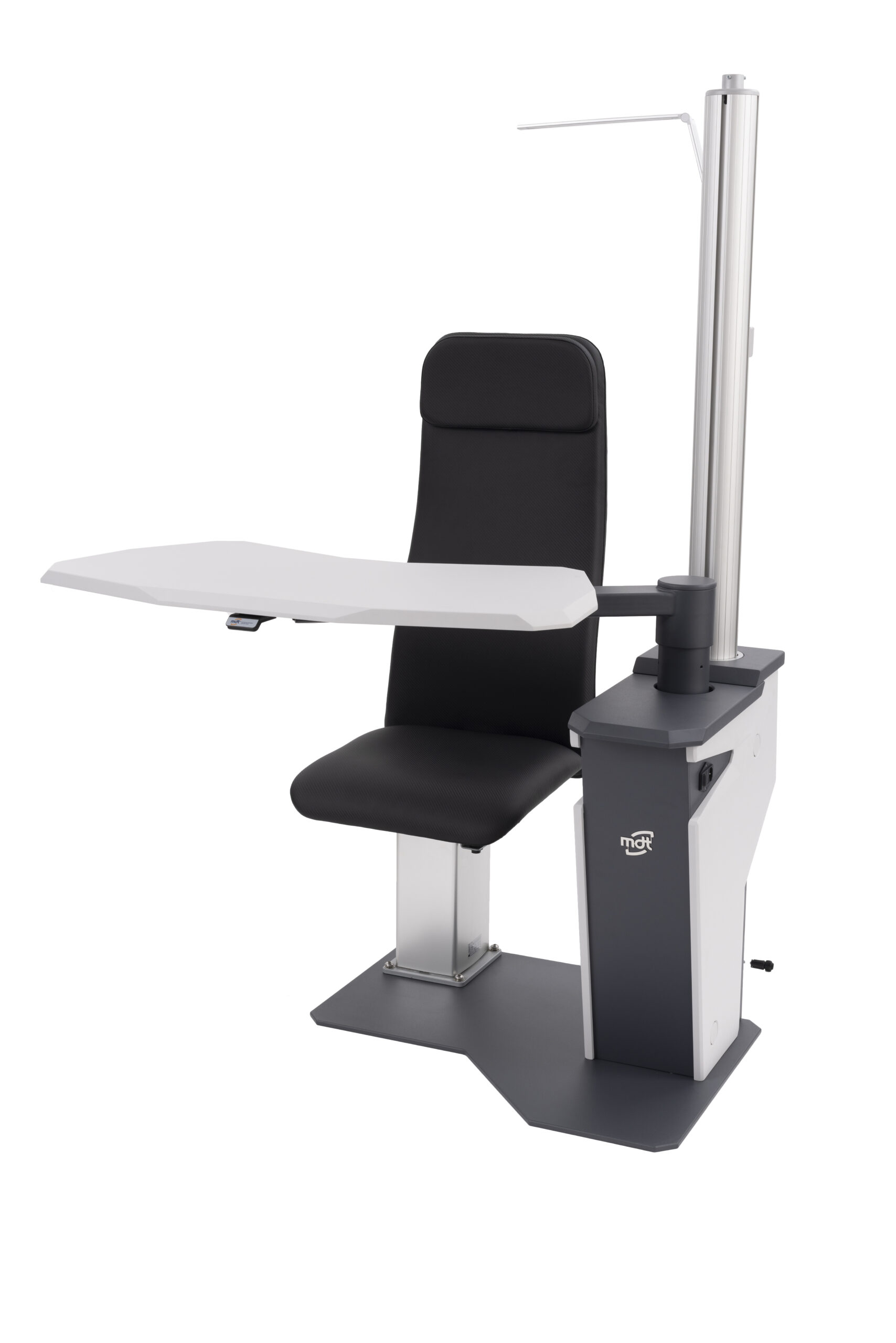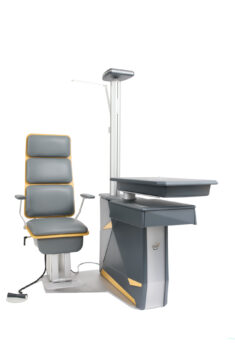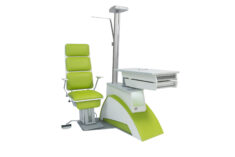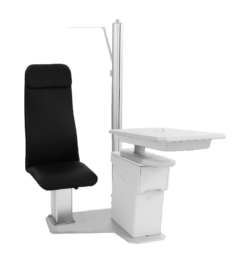UNIQ
Simplicity and space-saving design combined with functionality.
Files to download
Learn more about product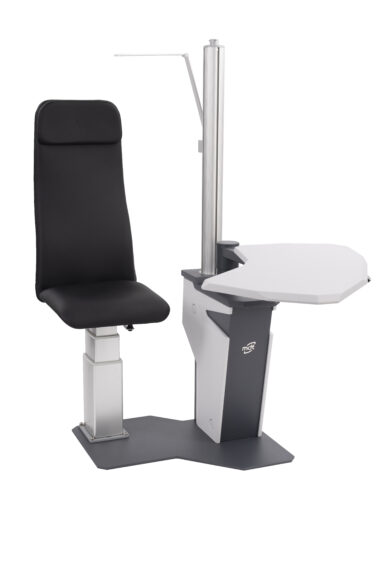
Tech spec
- Equipped with electrically elevated SLIM chair (available in black upholstery only)
- Convenient chair height adjustment switch on the table top
- V-shape, fixed height, non-extendable table top for 2 instruments, with optional universal chin rest adapter
- ALU post suitable for installation of both, chart projector and PA-1000 phoropter arm (option)
- Table top electromagnet lock switch hidden under the auxiliary table top
- Efficient, foldable and revolving LED lamp with a manual switch
- Right-handed setup as a standard, left-handed available upon order or during on-site installation
- Side casings and table top painted in RAL7047
- Front casing and auxiliary table top painted in RAL7024
- Steel base powder coated in RAL7024 EU Declaration of Conformity provided
Optional extras
In order to provide the most competitive prices the number of optional features has been limited:
- Footrest for SLIM chair – n/a
- COMFORT chair – n/a
- PA-1000 counterbalanced phoropter arm equipped with a gas spring
- PA-3000 – n/a
- Elevated table top – n/a
- Customised main body colours – n/a
- Customised upholstery colours – n/a
- Pivotal arm with trial lenses tray and cassette
- Chart projector shelf
- Left-handed setup (factory preset or upon on-site installation)
- CBS-1000 Control Box Stand
- Ophthalmoscope/retinoscope rack
- Universal chin rest adapter
Additional Safety Note 2023-04-24
Dear Customers,
According to the Instruction for use of all refraction units manufactured by MDT, in patient chairs equipped with such an option, the footrests are designed to be used as a support for the patient’s feet during the examination. The chairs are being delivered with the raised footrest only for transportation reasons, but upon installation should be left open and used always in this position with the patient sitting on a chair. It is not allowed to move the chair up or down, with the footrest in a raised position. While using electro-mechanical parts of the unit, the operator must observe the patient’s position on a chair and make sure neither head, hands or legs are in a conflict with any moving parts of the unit – including chair movement, its armrest (if applicable), table top or phoropter arm sliding and rotating.
Dear Customers,
According to the Instruction for use of all refraction units manufactured by MDT, in patient chairs equipped with such an option, the footrests are designed to be used as a support for the patient’s feet during the examination. The chairs are being delivered with the raised footrest only for transportation reasons, but upon installation should be left open and used always in this position with the patient sitting on a chair. It is not allowed to move the chair up or down, with the footrest in a raised position. While using electro-mechanical parts of the unit, the operator must observe the patient’s position on a chair and make sure neither head, hands or legs are in a conflict with any moving parts of the unit – including chair movement, its armrest (if applicable), table top or phoropter arm sliding and rotating.
